1st PhD cohort

Ghulam Abbas
Sediments in reservoirs and streams affect the water quality, harm aquatic life and increase the treatment cost for drinking water. Erosion from stream bank involves fluvial erosion, mass waiting and sub aerial processes. Sediment transport in river networks relates to complex interaction between soil erosion and deposition which may shift the contribution of upland erosion and channel bank erosion, which are dominant sources of sediment in central European river networks. Fingerprinting approach is applicable to investigate the transition points using spectral, radionuclides and geochemical tracers within river catchments. Application of tracers to understand fine-grained sediment source quality was used in 1970s and statistical methods were used to improve the toughness of source discrimination. This results in the growing application of composite signatures combining tracers with differing environmental controls, and a wide range of tracer properties have been tested and applied in the growing body of studies using the fingerprinting approach.
Sediment yield requires consideration at catchment scale as it is very important for damage to infrastructure, capacity loss of reservoirs, estuaries and harbours sedimentation, coastal erosion, eutrophication problems, river delta development, transportation of pollutants and damage of ecological habitats. Source apportionment studies are largely missing in central Europe which makes it difficult to target mitigation measures reducing sediment loads at the catchment scale. Scaling of sediment sources and transport includes source tracing studies, river network models for scaling patterns and analysis of management measures for sediment loss to stream networks.
Considering sediment source related issues, there are a number of key challenges that need further attention while using these techniques to understand sediment processes or as a sediment management tool. This will be concentrated primarily on the attenuation capabilities of these features of reducing sediment losses to stream networks. Three catchments have been selected for field investigations. Potential sediment sources have been classified on the basis of soil type, landuse and upland erosion risk assessment map.
This study also includes spatial patterns because it is essential in scaling sediment sources and transport from localised measurements to larger spatial scales in order to provide assessments of mitigation impacts on sediment at the catchment, regional or national scale for policy purposes. Thus, the evidence that shows the rewards of adding attenuation capacity to a catchment are needed by end users, which is one goal of my study project.
Mentor TeamProf. Michael RodeDr. Seifeddine Jomaa |

|

Nahed Ben Salem
In many regions of the world, water quantity and quality are being threatened by the increasing anthropogenic and climate change pressures. The Mediterranean region is recognized as one of the most sensitive regions in the world to water scarcity and experiencing substantially accelerated drying compared to global warming. Groundwater is considered as a strategic freshwater reserve in the Mediterranean region, but facing severe over-exploitation and quality deterioration due to the increasing demand from a growing population, extended agriculture and decreasing natural recharge. However, the status of this resource remains poorly characterized, and its total budget uncertain. Thus, it is crucial to act immediately as the scene is already set for a crisis of major proportions. In recent years, groundwater modeling has moved from local to regional/global scale, offering insights into the status of data-scarce regions and considering the transboundary systems. However, it remains unclear to what extent those models can be used as scientific decision-making tools. In this context, the main aim of our research project is how we can enhance groundwater sustainability in the Mediterranean region. More specifically, we are interested in (i) improving our physical understanding of groundwater functioning in the region, (ii) investigating the most controlling drivers of groundwater depletion, (iii) and testing how the management options can mitigate the future climate change effects. Our investigation proposes an investigation that has a regional-wide overview of groundwater systems that bridges the gap between the local models and the simplified global-scale models. The resulting predictions will be the first regional and validated groundwater model in the Mediterranean region, which can be used as strategic scientific-based decision tools to test the effects of future mitigation and climate scenarios on groundwater functioning and budget.
Mentor TeamDr. Seifeddine JomaaProf. Michael Rode |

|

Jakob Benisch
Nowadays, urbanization is a fast occurring process and expected to rise in the coming years. Side effects of this development are the manifold pressures put on those waterbodies ingested by growing cities. The perspective on those streams is changing from using them as drains to recreational areas with positive aspects on the city climate. Due to that, questions on restoration strategies and management practices are under evaluation and research. My PhD focuses on the assessment of effects of urban areas on streams as well as the ecological degradation related to that. To do so, I operate a monitoring network in two streams in Dresden, in a way that discharge and selected water quality parameters are monitored with online sensors and automated samplers - before and in the city of Dresden – together with the outlets of the connected sewer network. I focus on methods to prove those effects on data with a high temporal resolution to define the most serious influences of those catchment changes.
Mentor TeamProf. Peter Krebs |
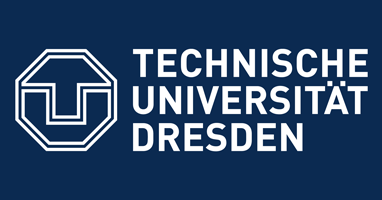
|

Arianna Borriero
My doctoral project is part of the PhD college DYNAMO, a cohort of PhDs focused on the investigation of how hydrological and climatic events influence the movement and turnover of pollutants in catchments.
The aim of my project therefore aims at better representing the dynamics of flow, solute transport and turnover in a mechanistic water quality model, particularly under extreme event conditions.
I am focusing on the use of existing stable water isotope data, from various sub-catchments in the Bode region, for validating and constraining dynamic transit time distributions (TTDs) in spatially distributed models. The incorporation of the dynamic TTDs in a catchment-scale water quality model allows to better constrain modelled transport dynamics and thus to improve the parameterization of the water quality model. Spatial representation of TTDs significantly increases the accuracy and reliability of water quality models. The PhD project also allows to accurately simulate the time scales of solutes transport and reactivity in catchments, which is crucial to describe associated legacy contamination such as nitrate concentrations in groundwater because of decades-long fertilizer application.
Mentor TeamDr. Stefanie LutzDr. Rohini Kumar Prof. Jan Fleckenstein Prof. Sabine Attinger |

|
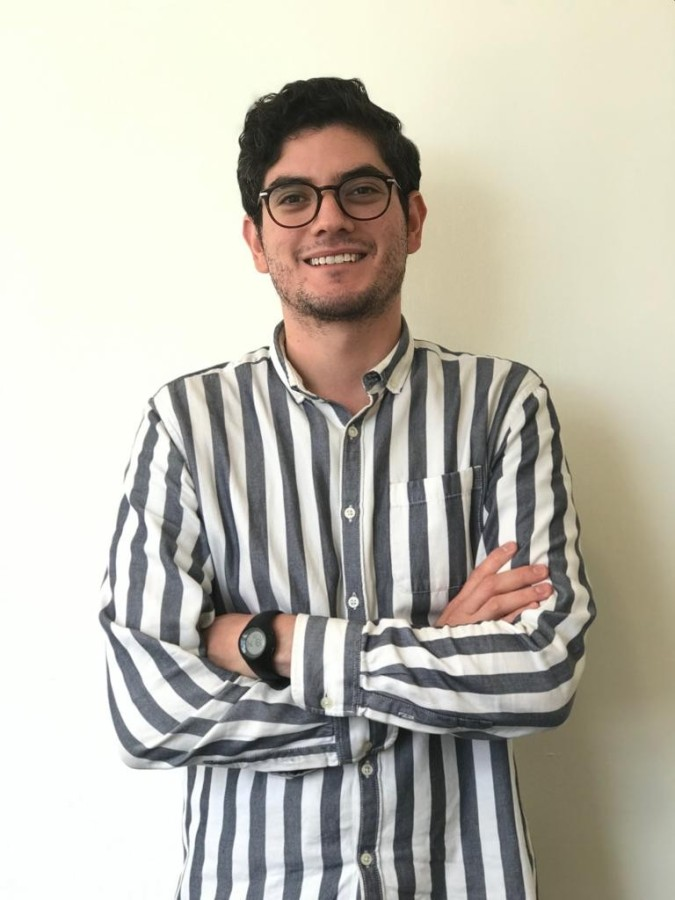
Rafael Chavez
My research project sets out to do a data-driven regional assessment of groundwater quantity and quality in the Mediterranean region, by collecting data from several sources and analysing trajectories with a Driver-Pressure-State-Impact-Response (DPSIR) approach.
This research project is encompassed by the Innovative and Sustainable Groundwater Management in the Mediterranean (InTheMED) project. InTheMED aims to implement innovative and sustainable management tools and remediation strategies for aquifers in the region (inland and coastal) in order to mitigate anthropogenic and climate-change threats. As the monitoring and data analysis component of the larger project, the main objectives of this research are to:
• Review and collect the available data sets on groundwater with a DPSIR approach, including quantity and quality, water use indicators and environmental data for the Mediterranean region
• Analyse regional groundwater trends and trajectories, and their controlling factors using Specific, Measurable, Achievable, Relevant and Time-bound (SMART) indicators.
• Reinforcement of the systematic monitoring and data sharing in the Mediterranean region.
With this data-driven approach, we aim to deepen the understanding of temporal trajectories of human impacts on groundwater systems and reciprocal effects on societies. The hypothesis is that understanding past groundwater history can help in the understanding of present-day and future evolution.
Mentor TeamDr. Seifeddine Jomaa Prof. Michael Rode |

|
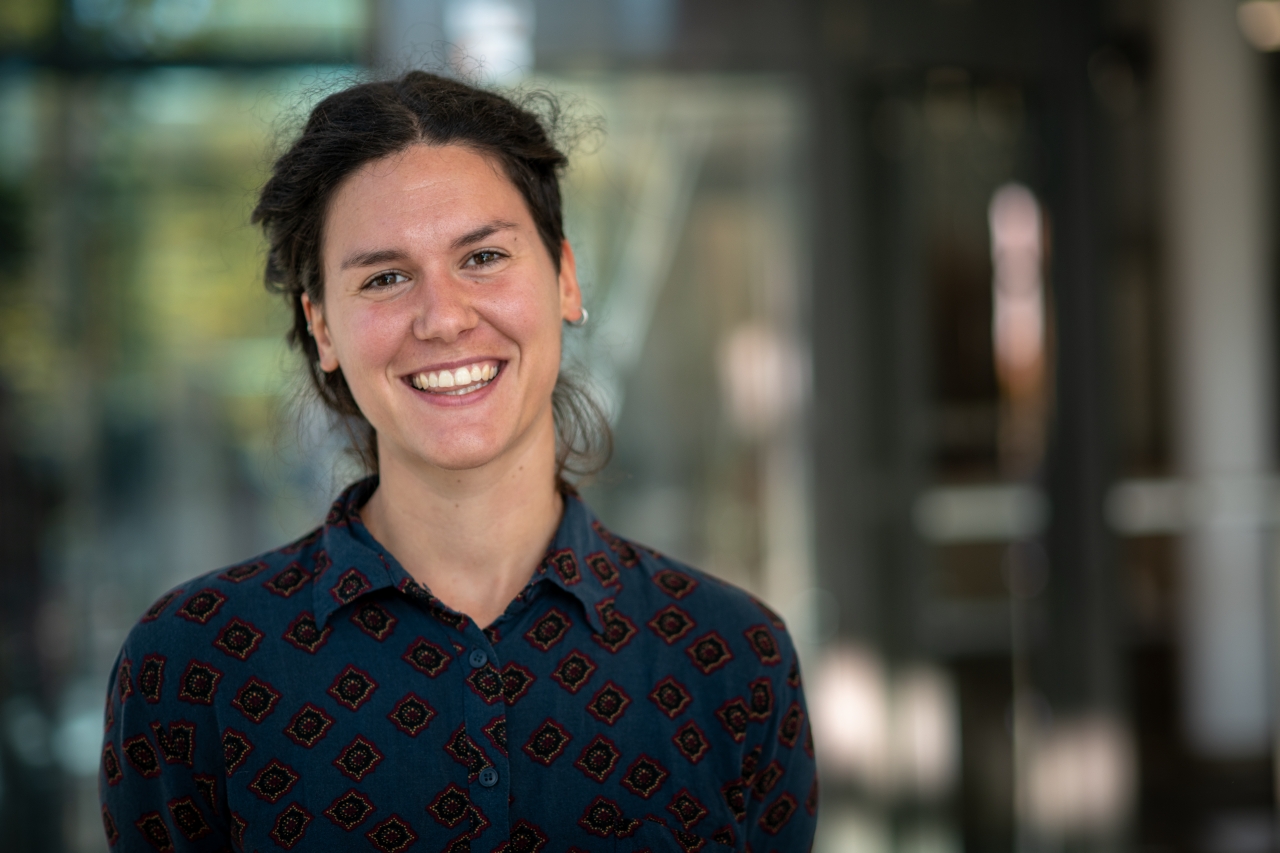
Joni Dehaspe
Nitrate widely considered a threat to European water quality. Nutrient excess in rivers leads to ecosystem harm and can induce detrimental algae growths in coastal areas. In Germany and Europe, the management of riverine systems is complicated by the lack of understanding of nutrient pathways and effectiveness of retention processes from application to export. In my PhD thesis I investigate if catchment scale nitrate uptake can be predicted from biogeochemical signals at the catchment outlet, observable as concentration discharge relationships. More specifically, we study if the shape of an observed C-Q relationship can be linked with in-stream uptake velocity of nitrate and catchment wide travel times using an explorative modelling approach. Furthermore, we aim to identify controlling factors (e.g. nutrient concentrations, geology, topography, light availability,..) driving nutrient uptake dynamics in different stream networks in Germany.
Mentor TeamDr. Andreas MusolffDr. Rohini Kumar Prof. Jan Fleckenstein Prof. James W. Jawitz |


|
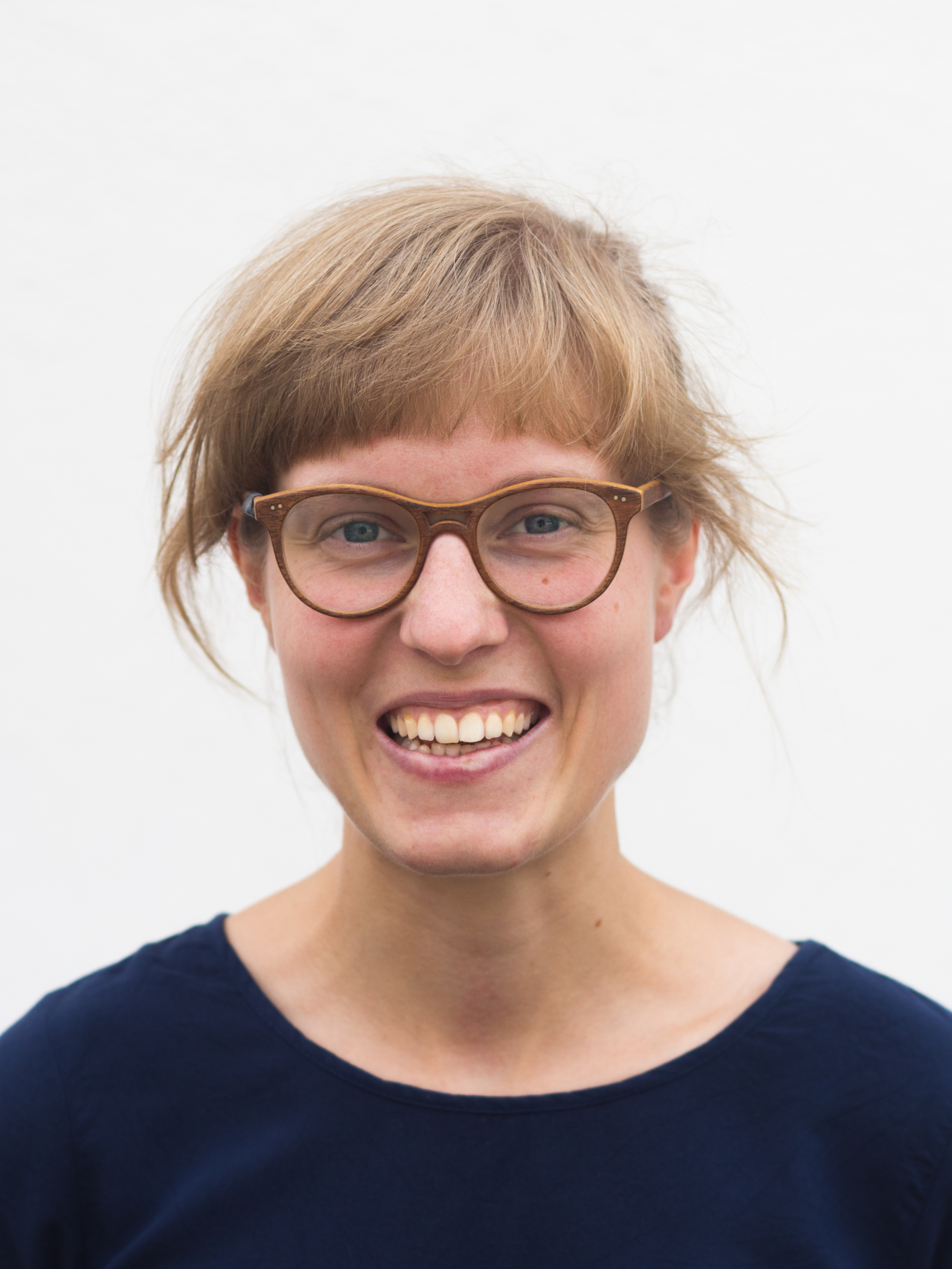
Maria Determann
The topic I work on is about the role of lakes and reservoirs in modulating solute export signals from catchments. My project, as part of the DYNAMO PhD College, is about deepening the understanding of lake-catchment-dynamics, which are often left out until now when studying solute export signals. It seems there is an urge for a new view and approach to embrace both catchment and standing water. During my project a coupled aspect of these dynamics shall be examined, through combining a lake model with catchment dynamics, with a certain regard on bio-geochemistry. Especially seasonal variations and extreme events shall be considered. My project will bring aspects concerning the behaviour of catchmentlake-interaction on the export of solute substances like N, P or other nutrients, as lakes and reservoirs play a huge role in the retention of nutrients. Climate change will alter interactions and original seasonal patterns of the hydrological cycle. Nutrient behaviour is important to understand due to its significance for ecological processes and its essential availability in any part of the hydro- and ecosystem. I would like to find out, if and/or how extreme events influence retention capacities and the shift between transport-dominated and reaction-dominated states. My project aims to improve water security by increasing understanding of catchment processes that affect water quality and by developing modelling approaches that will ultimately be used to manage water resources.
Mentor TeamDr. Tom ShatwellDr. Andreas Musolff Dr. Karsten Rinke Dr. Marieke Frassl |

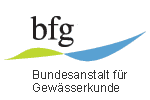
|
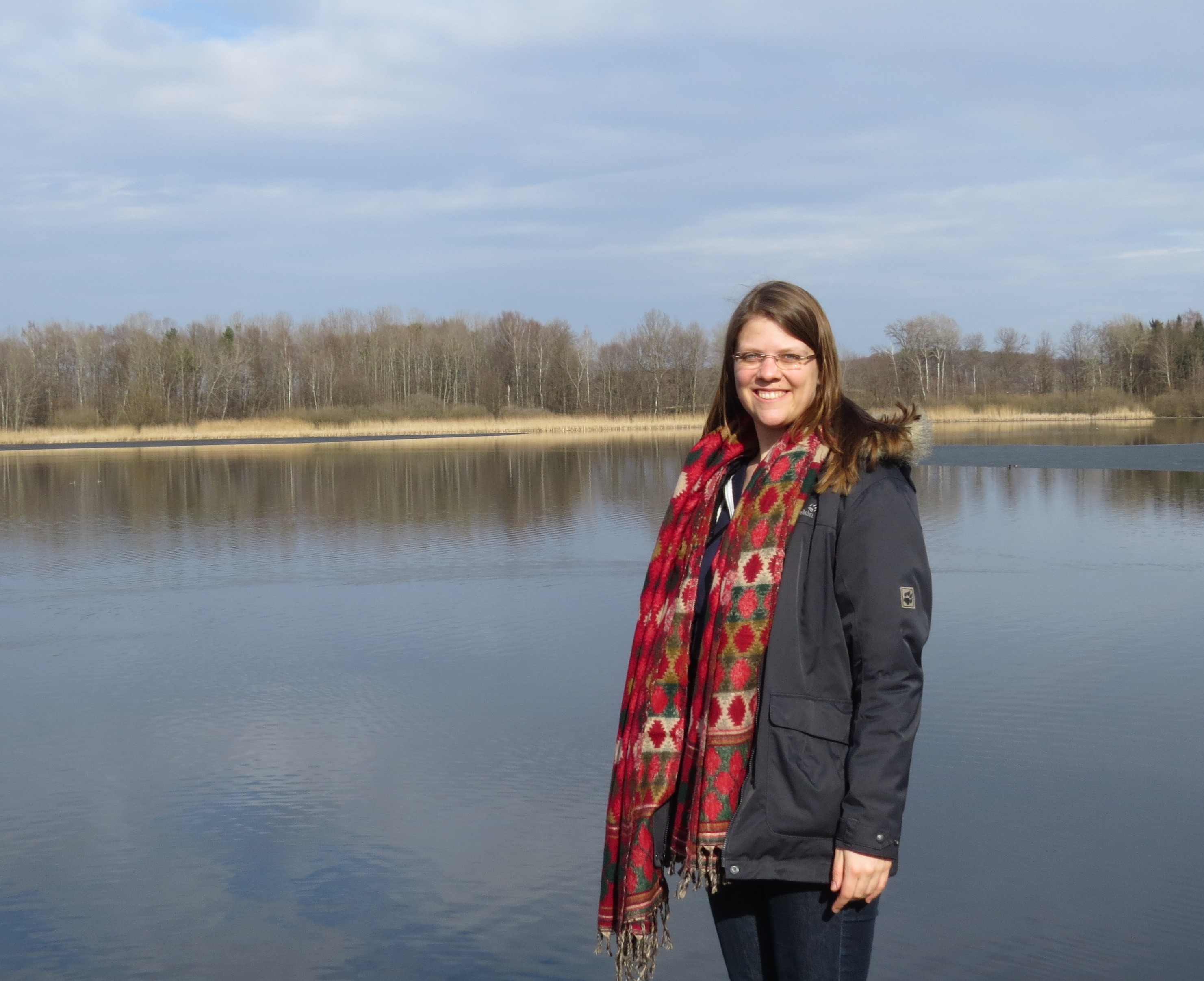
Pia Ebeling
Excess nutrients from anthropogenic activities threaten ecosystem and human health. Catchments integrate interacting hydrological and biogeochemical processes across scales with varying hierarchies. Therefore, understanding nutrient export and controls across catchments is a key for management. Here, data-driven large-sample analyses allow to identify similarities, differences and dominant controls. Regional patterns and archetypes were identified with NO3 and TOC being predominantly enriched and PO4 being diluted. Anthropogenic inputs interacting with natural factors dominantly control NO3 and PO4 concentration patterns, while TOC is controlled by topography. Overall, the interplay of source distribution and discharge contribution are a key control of nutrient export dynamics.
Mentor TeamDr. Andreas MusolffProf. Jan Fleckenstein |

|
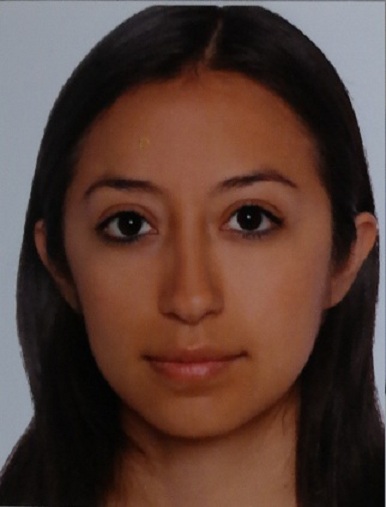
Claudia Valeria Fárez-Román
Ecologists have traditionally thought that lakes are biologically dormant in winter, because there is insufficient light for phytoplankton to grow until stratification begins in spring. However, recent developments have shown that there is biological activity. Algae can form large blooms during winter, but we know little about them because monitoring campaigns typically skip the winter. Our aim with DIABLO project is to understand which conditions lead to late winter blooms of large diatoms in lakes and reservoirs, and how these blooms affect the ecology and biogeochemistry in subsequent seasons. We will do this by 1) an analysis of over 100 collective years of high quality data from four of Germany’s best-monitored lakes and reservoirs (Lake Stechlin, Rappbode Reservoir, Saidenbach Reservoir, and Scharmuetzelsee), all of which have the required depth and water clarity range and support large winter biomasses of diatoms, 2) field measurements of key processes during winter and spring in one of our study lakes, and 3) coupled 1-D hydrodynamic-ecological modelling of three of the study lakes. We will quantify vertical fluxes of carbon and nutrients, winter phytoplankton inocula, and internal nutrient storage. Finally, the modelling effort will integrate the knowledge gained into mathematical process descriptions. The expected outcome is a comprehensive systems understanding in the form of a conceptual framework and predictive models of the occurrence of late-winter diatom blooms. This will help to close the seasonal loop and better understand the factors that control water quality in lakes. Ultimately, this research will help to understand how climate warming, which strongly affects winter, will influence lake ecology.
Mentor TeamDr. Tom ShatwellDr. Karsten Rinke Dr. Susanne Dunker Prof. Henrietta Hampel |

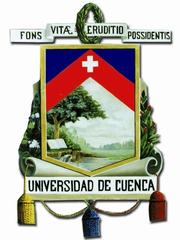
|
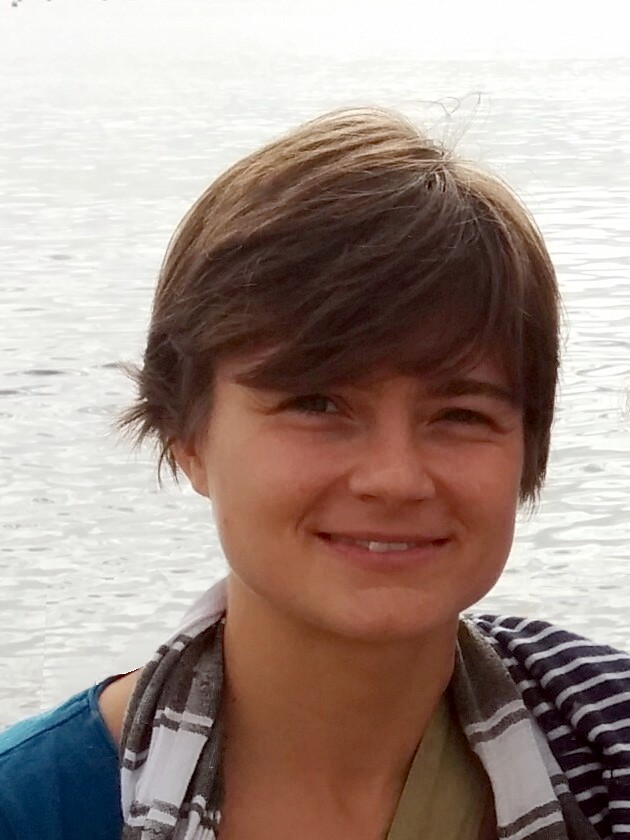
Sophia Hildebrandt
There has been an evolving body of laws for water protection, and European surface water quality has improved in many aspects. But it is not clear which legislative approaches have been most effective. This makes it difficult to systematically meet emerging challenges in water quality as well as developments in other regions of the world. Therefore, the PhD project combines river water quality trajectories of a sample substance, phosphorus, in three catchments with legislative measures and their implementation over the past 50 years. Methods involved are 1) the identification of P sources and pathways to surface waters, 2) an analysis of P legislation on point and diffuse sources on national and EU-level and sorting the legislative content in the three legislative approaches „source control“, „use-related“ and „end-of-pipe“, 3) data collection and processing of total phosphorus (TP) concentrations in municipal wastewater, in the rivers, and WWTP capacity and efficiency and 4) a literature research and interviews with contemporary witnesses on implementation aspects.
The goal is to provide insights of the efficacy of certain legal approaches over others.
Mentor TeamDr. Aki Sebastian RuhlProf. Borchardt Dr. Elisabeth Krueger |


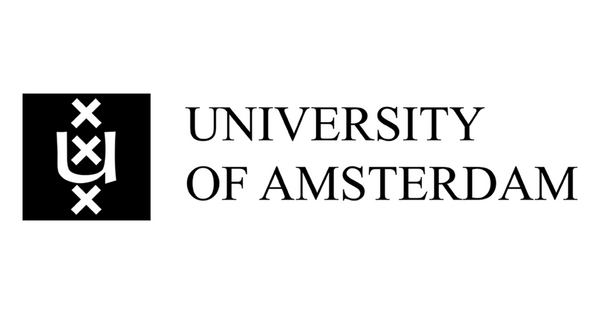
|
Anne Jähkel
The main objective of my Ph.D. project is to quantify nutrient processing in streams at the reach scale regarding whole-stream uptake. In detail, I investigate how human stressors such as gradients in temperature, light intensity, fine-sediment input and nutrient loadings impact the compartmental contribution (hyporheic vs. benthic vs. pelagic) to nutrient processing. Furthermore, I develop a new method to calculate nutrient net-uptake by hydrological tracer experiments and water sampling in six tributaries to the Holtemme river in the Bode catchment.
Mentor TeamDr. Christian SchmidtDr. Daniel Graeber Prof. Dr. Jan Fleckenstein |

|
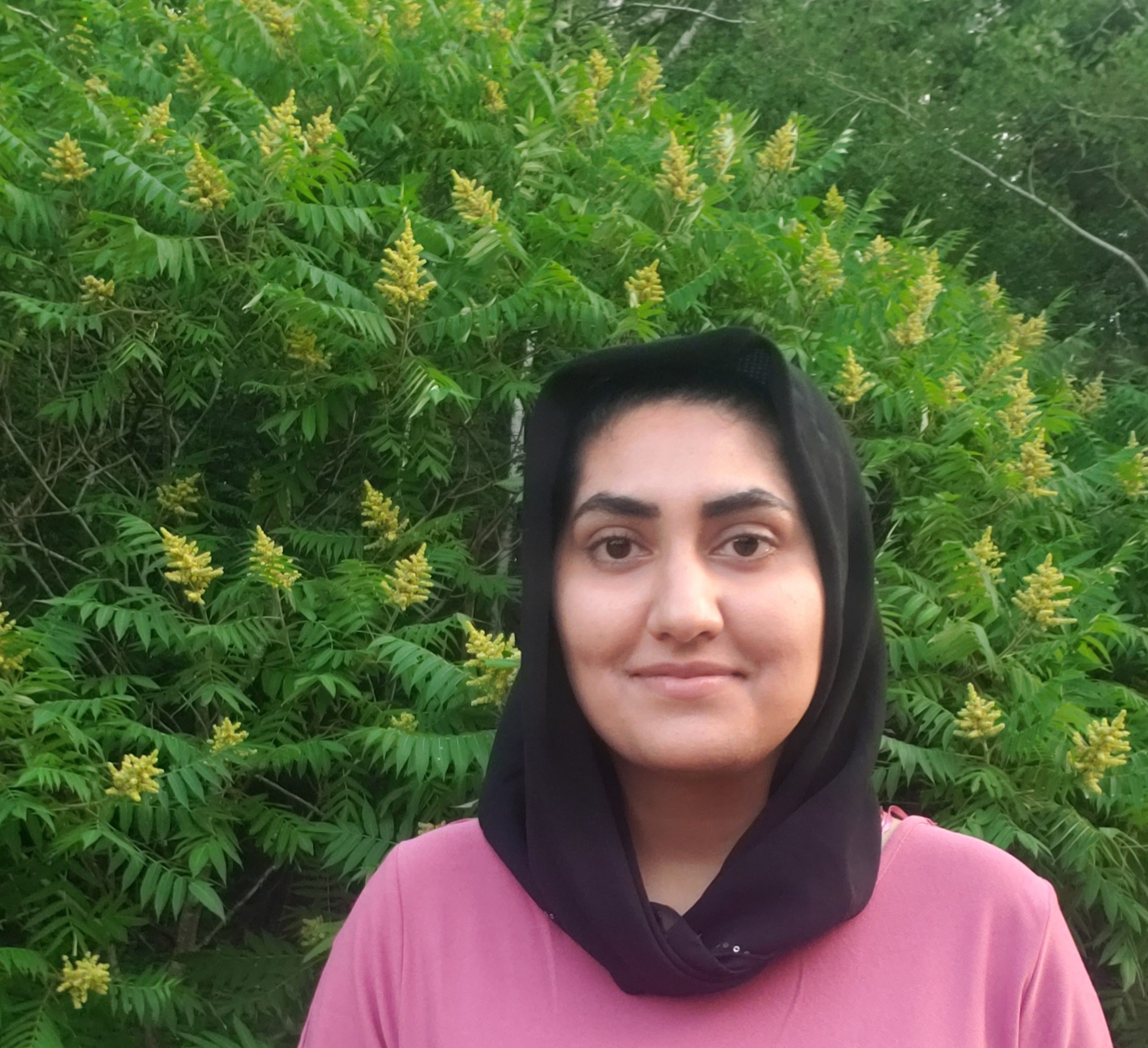
Aisha Javed
Climate change has been predicted to amplify the hydrological cycle in the form of increased cloudiness, latent heat fluxes, intense precipitation events, and flooding. Although empirical evidence is now corroborating the forecasts of hydrological extremes, there are still considerable gaps in our understanding of the complex interplay among hydrological factors, morphological features, land uses, and the urban environment and agricultural activities that will determine flow regimes and pollutant attenuation rates in a watershed context. In light of this, my doctoral research aims to characterize extreme weather conditions, elucidate the impact of extreme events on flow regimes and nutrient cycling within the context of urban and agricultural watersheds, and examine the implications of the increased frequency of extreme weather events for the resilience of the receiving waterbodies. The anticipated insights into the ability of hydrological extremes to modulate the response of integrated watershed-receiving waterbody systems will offer fundamental knowledge to the field of biogeosciences. This research will also have broad applicability to government agencies that need scientifically-robust projections of the effects of management alternatives in order to make decisions that usually have considerable socioeconomic implications.
Mentor Team |
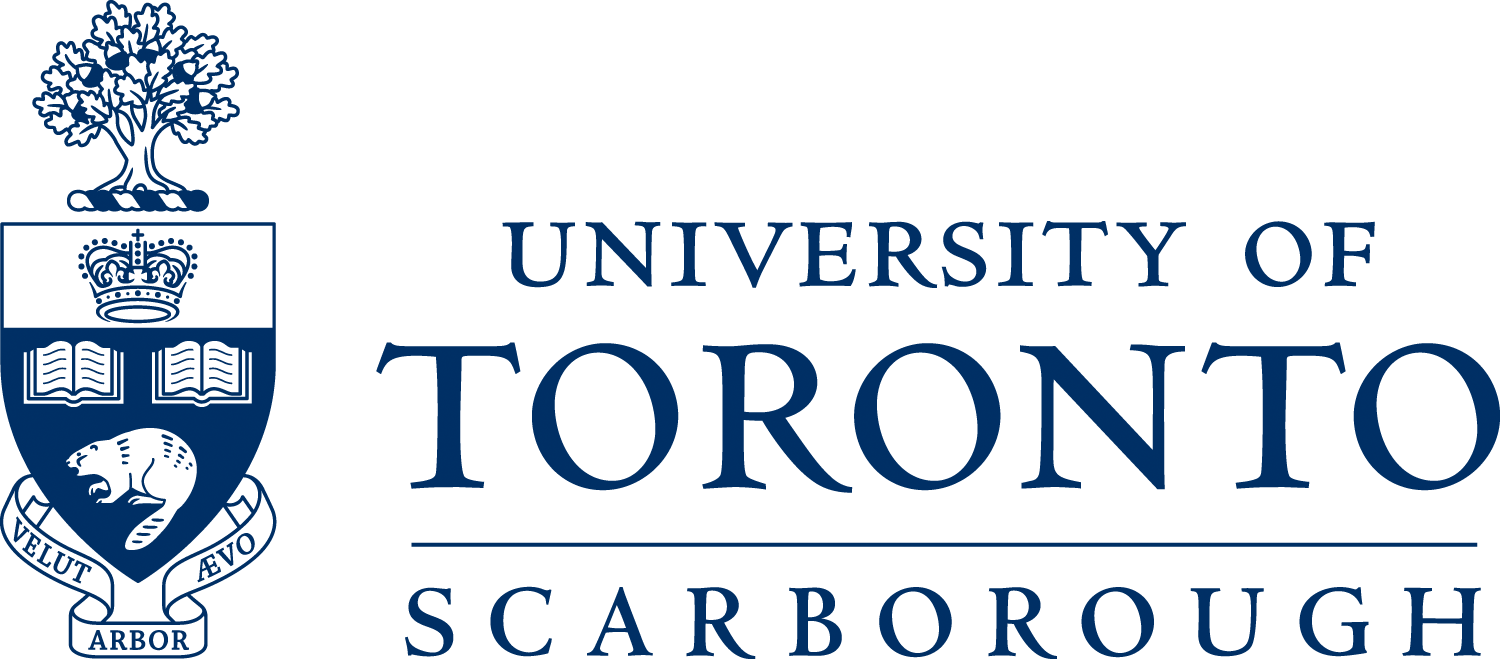
|
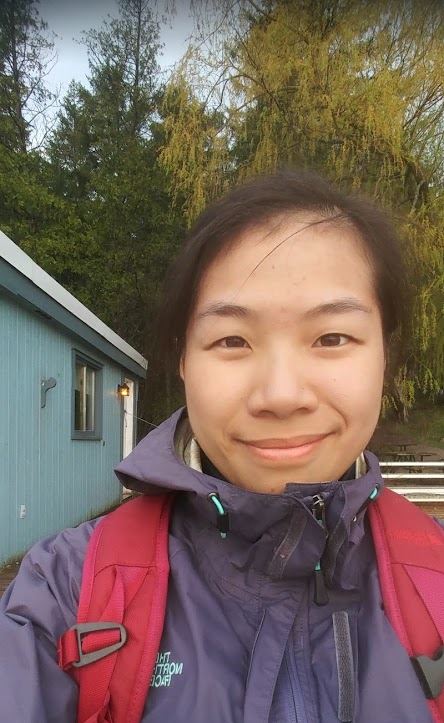
Wai Ying Lam
Undisturbed forests can sequester mercury (Hg) via accumulation in vegetation and soils. Microbially driven processes convert Hg to methylmercury (MeHg), which is a potent neurotoxin that bioaccumulates in aquatic food webs, potentially affecting access to safe fish for consumption. Although forest harvesting practices do not directly augment Hg inputs to ecosystems via discharges, biogeochemical changes from harvesting have been observed to increase Hg mobilization, methylation, and bioaccumulation in aquatic organisms. Many jurisdictions have forestry Best Management Practices (BMPs) to minimize hydrologic and soil disturbance; however, existing BMPs are not explicitly designed with the mitigation of Hg methylation and mobilization in mind, and their efficacy at mitigating Hg contamination in aquatic systems is unknown. Our research aims to identify and evaluate the effectiveness of the BMP strategies that reduce the hydrological loading of total Hg and MeHg between harvested forests and associated aquatic systems, with fieldwork based in northwestern Ontario, Canada. This research will produce the scientific guidance necessary to mitigate Hg contamination risks and reduce the impacts of forest management on ecosystem health while meeting legislative requirements of sustainable forest management and optimizing yield.
Mentor Team |

|
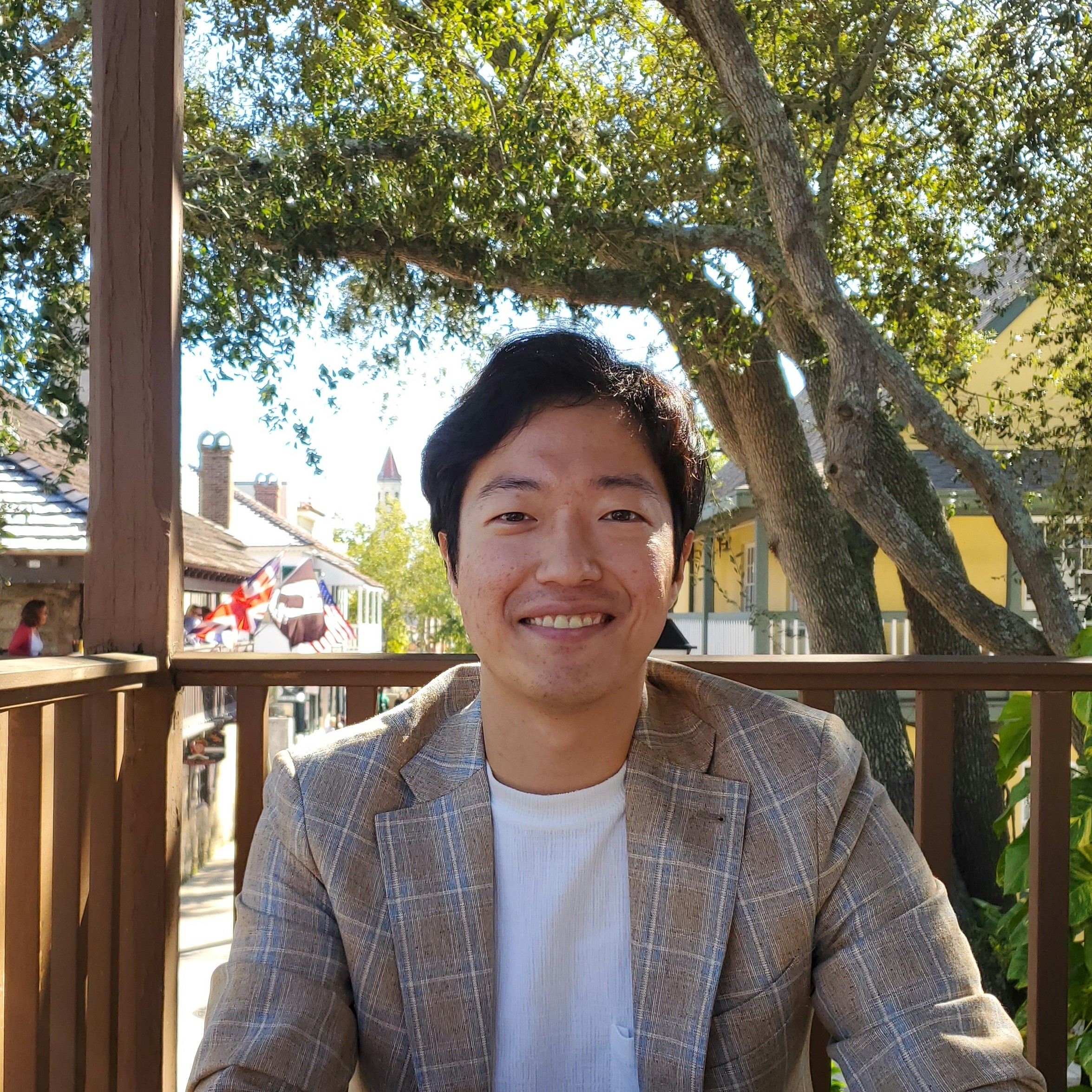
Jaehyeon Lee
The variability of climate resulting from the Earth's orbit has a large impact on the Earth system. Changes in temperature create seasonal characteristics, affect the circulation of the atmosphere, and create seasonality of precipitation. These hydrometeorological properties affect the water balance and the amount of runoff caused by precipitation. However, due to climate variability, floods and droughts occur, and the timing of harvesting crops is set, and these seasonal characteristics affect various fields such as human productivity and economic efficiency. Therefore, it is very important to understand the variability of climate, and how this variability affects humans. My research focus on finding answers to the following questions: 1) How does climate variability affect the water balance? 2) How does climate variability affect human society and the economy? 3) How does the change in water balance caused by climate variability or the availability of water resources affect human society and the economy?
Mentor TeamProf. James Jawitz |

|
Julia Pasqualini
I am part of the inSTREAM project where we want to quantify the link between compartmental- and whole-stream nutrient uptake as well as the interplay between biological and hydrological controls to predict and manage nutrient exports from catchments.
My PhD project with inSTREAM focuses on the biological control of compartmental and whole-stream nutrient uptake along stressor gradients.
I have sampled bimonthly for a year in a forested and in an agricultural stream to measure secondary production of macroinvertebrates inhabiting the benthic zone and meiofauna living in the hyporheic compartment.
Simultaneously, an extensive sampling of the abiotic parameters of the benthic and hyporheic zone has been performend to understand interactions between the community inhabiting the hyporheic zone and the environmental factors.
The changes in the contribution of meiofauna to nutrient uptake will be investigated in a mesocosm experiment with addition of labelled N15 isotope under different stress condition.
Mentor TeamDr. Mario BraunsProf. Dr. Markus Weitere Dr. Daniel Graeber Dr. Nabil Majdi |

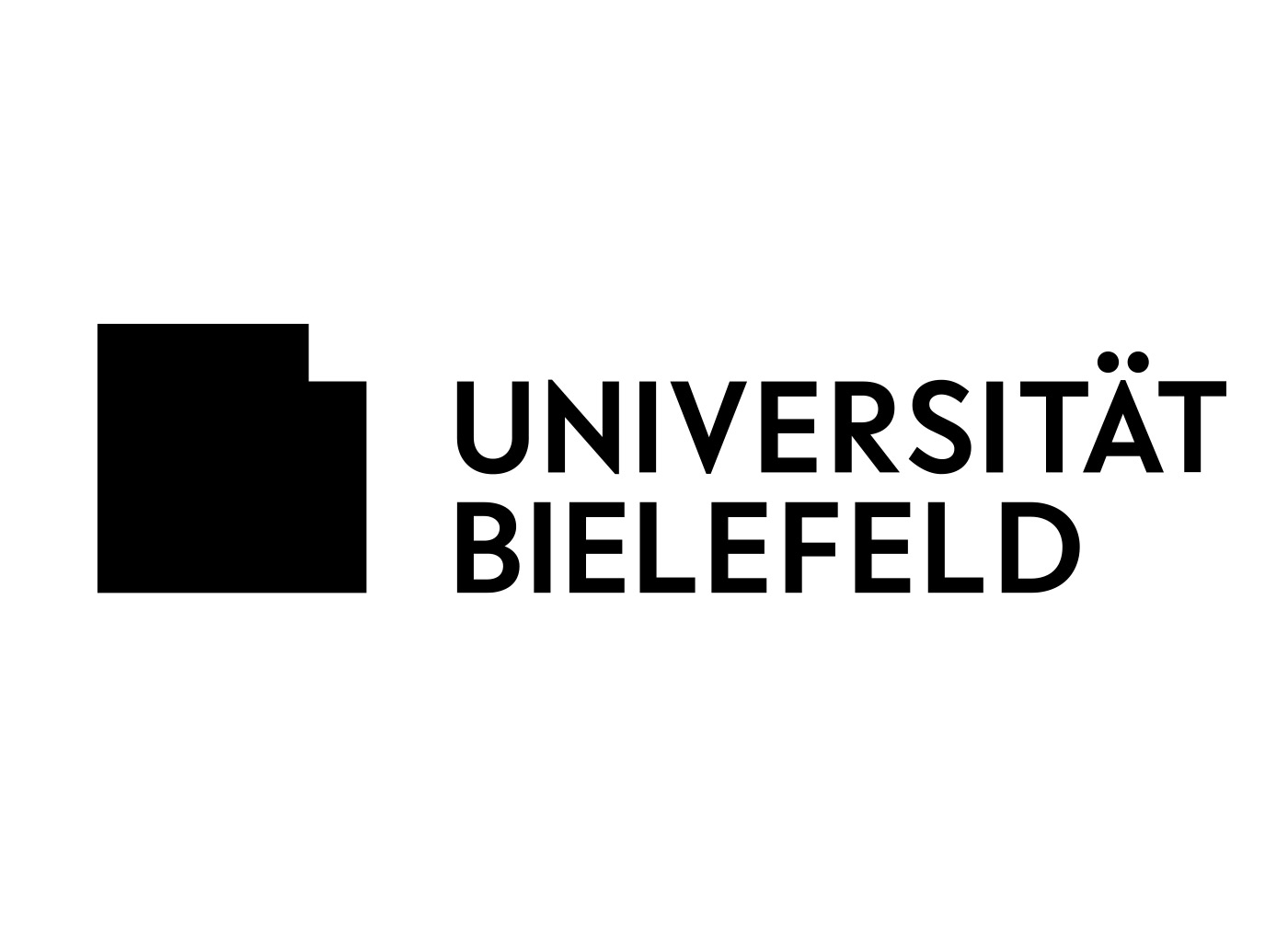
|
Christina Radtke
My project “Deciphering catchment’s transit time dynamics using event isotope signatures” is part of the PhD network DYNAMO. The project aim is to understand how flow paths and source areas of water change between average flow conditions and extreme events. Until now it is unclear to what extent of extreme events may impact the transport and reactivity and the short- and long-term fate of pollutants in catchments. By using environmental tracers like stable water isotopes, I will study transit time distributions in different sub-catchments of the Bode river, which specify the time that water spends within catchments between its time of entry via precipitation and its time of exit at the catchment outlet.
I will analyse the transit time dynamics during events, assuming that the transit times generally increase during droughts and decrease during floods, but the magnitude of these changes is unknown. Additionally, the pre-event conditions like soil moisture conditions and event characteristics such as duration will be investigated by relating their impact to event transit time dynamics in contrasting sub-catchments of the Bode Catchment. To achieve this, sub-daily isotope samples will be taken to accurately constrain event transit time dynamics. Additionally, a model will be developed to determine the transit times of each sub-catchment.
Expected outcomes are the provision of an extensive high-resolution isotope data set as well as a modelling tool to incorporate event isotope data, the development of a guideline for event isotope sampling in precipitation and streamflow and the characterisation of event transit time dynamics in terms of their spatial and temporal variation and response to event characteristics.
Mentor TeamDr. Kay KnöllerDr. Stefanie Lutz Prof. Ralf Merz Dr. Paolo Benettin |

|

Hugo Enrique Reyes Aldana
The definition of ecosystem health lacks a formal framework, even for highly studied and accessible ecosystems such as grasslands, and the definitions become even more labile when it comes to systems such as large rivers where there is a considerable absence of information. Furthermore, stream ecosystems are highly important for human development as they provide a great amount of services such as water supply, transportation, climate control, among others. It is also worth mentioning the present degradation of all of the ecosystems on Earth, and rivers face it through the constant use and reshaping which has led to a degradation and loss of some of them. In order to counter the degradation which poses a risk to water security for humans and the stability of natural ecosystems, it is needed to comprehend the underlying factors influencing the state of stream systems. For a long time monitoring stream ecosystems has been done using primarily structural metrics such as biological diversity (focusing on few species), temperature, dissolved compounds (C, O, N, P, Si), canopy cover, precipitation, etc. This measurements may be informative for quantification of very particular aspects, however they result less informative to explain the dynamics of a whole system. Therefore, a further approach considers the use of functional metrics such as nutrient cycling, migration of species, streambed mobility, just to mention some. These metrics are more informative as they give information about the relationships occurring in the ecosystem; a measurement that has shown to be particularly informative is whole stream metabolism, as it gives an insight of the sum of processes happening in the biological community. However, it is still obscure how all the components of stream ecosystem influence the metabolic state, and importantly, how can these measurements be used to develop and implement monitoring, management and restoration efforts. Therefore the aim of this PhD project is to disentangle the relationships among multiple ecosystem factors and their contribution to the ecosystem in order to apply these results for determining and improving the health of stream ecosystems through monitoring, management and restoration strategies.
Mentor Team Dr. Ute Risse-Buhl Dr. Daniel Graeber Prof. Markus Weitere Prof. Matthew Cohen |


|
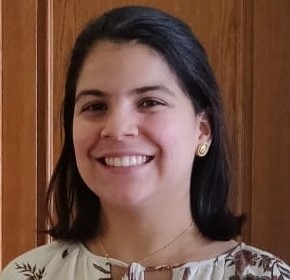
Karen Lorena Rojas Gómez
The contaminant transport of hydrophobic pollutants is often facilitated by the transport of suspended sediments. For example, polycyclic aromatic hydrocarbons (PAHs), polychlorinated biphenyls (PCBs), pharmaceuticals, heavy metals and faecal microorganisms are attached to particles that can be mobilised during heavy rainfall events. This affects surface water quality and creates public and ecosystem health risks.
Quantification and characterisation of diffuse pollution sources and particle bound pollutants remain a challenge. European governments continue facing problems in order to implement the European Union’s Water Framework Directive (WFD), especially while tackling diffuse pollution from urban areas and maintaining healthy ecosystems. Despite high investments, the implemented management alternatives are still inefficient. Hence, this project mainly aims to understand the impact of the fate and transport of particle bound contaminants on the water quality of urbanised catchments. This will allow development of an innovative approach for selecting appropriate technology and strategies to achieve good water quality status of water bodies receiving urban emissions.
I will focus primarily on particle bound pollutants related to urban diffuse and point discharges into surface water bodies. In order to improve urban water management, I will address the following objectives:
• Understand the relationship between drivers of relevant particle bound contaminants (i.e. heavy metals, pharmaceuticals, PAH) and response of the urban water system under dynamic conditions (i.e. variable sediment load, precipitation, storm water discharge, river flow, combined sewer overflow - CSO and discharge from waste water treatment plants - WWTP).
• Characterise the main processes that affect relevant dissolved and particle bound contaminant and sediment transport (adsorption, desorption, sedimentation, re-suspension) and their impact on the spatiotemporal variability of the contaminants.
• Identify the sources of sediments, the attached relevant particle bound contaminants and their relative contribution to a given study area (e.g. Lockwitzbach catchment, Holtemme river).
• Evaluate the impact of the relevant particle bound contaminants on the water quality of rivers under different flow regimes considering seasonal variations.
• Develop a framework to propose appropriate urban water management strategies to reduce and control diffuse pollution and especially particle bound contaminants for a given study area considering relevant water quality standards.
Within a framework of complex water-related interactions among people, urban drainage systems, and rivers, overall goal of this project is to characterise the transport process of particle bound pollutants coming from urban environments. I will evaluate water quality and quantity using high-resolution observed data obtained by novel measurement techniques. The data come from two urban observatories in Germany: one in Dresden, and one planned in Wernigerode by the UFZ. Such monitoring stations will include observation points in the sewers and the receiving water bodies. The analysis of water quality impacts will be done based on modelling and statistical approaches. Therefore, my project will not only provide a better understanding of transport of particle bound contaminants but, also it is expected to facilitate the implementation of an effective integrated water management, which considers the interaction between urban water drainage networks and aquatic ecosystems.
Mentor TeamDipl.-Ing., Dipl.-Hydrol. Björn HelmProf. Peter Krebs Dr. Soohyun Yang Prof. Dietrich Borchardt |
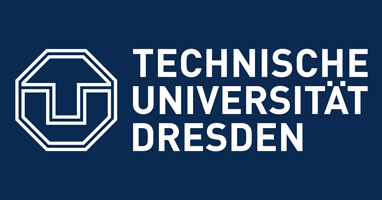

|
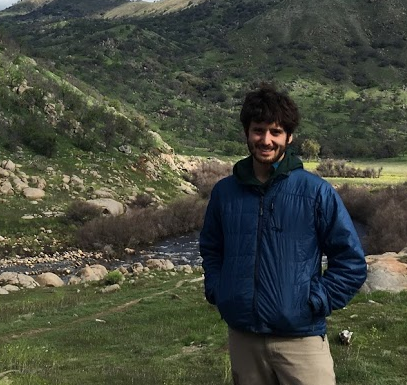
Felipe Saavedra
My project investigates the Effects of hydrological events on solute mobilization and delivery in German river catchments. The project is a part of the DYNAMO Cohort, which integrates four multidisciplinary PhD projects with the aim of improving the characterization of pollutant dynamics in river catchments. In my project, we plan to analyze the concentration-discharge (C-Q) relationships of a wide range of catchments to understand the variability of export regimes across different hydrological conditions.
Relationships between solute concentrations and streamflow rates observed at catchment outlets provide useful information on hydrological functioning and biogeochemical transformations at catchment scale. The shape of C-Q relationships of solutes encodes export regimes and determines the quantity of critical substances such as nutrients delivered to streams. A considerable scatter in C-Q relationships indicates an abundance of ambivalent situations that is possibly related to different hydrological event conditions occurring at sampling time. Furthermore, extreme hydrological events may even trigger lasting changes in export dynamics of solutes and produce adverse effects on water quality in streams despite mitigation efforts.
Mentor TeamDr. Larisa TarasovaDr. Andreas Musolff Prof. Dr. Ralf Merz Dr. Jana von Freyberg |

|
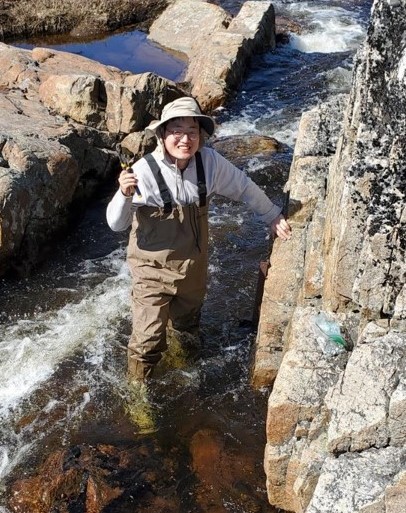
Yuseung Shin
Ecosystem metabolism, consisting of gross primary production (GPP; organic carbon production) and ecosystem respiration (ER; organic carbon consumption), describes the dissipation of energy and carbon in ecosystem level. It is an effective tool to study myriad ecological functions of all kinds of ecosystems. However, until recently, studies of ecosystem metabolism in rivers are far behind of other systems due to technical limitations. Since rivers are affected by numerous abiotic and biotic factors more than just climate seasonality, ecosystem metabolism can reveal the unique ecological functions of rivers. Therefore, my research focuses on abiotic controls (e.g., light, flow, and temperature) on temporal patterns of ecosystem metabolism in flowing waters and unveiling the nutrient effects on river metabolism, which is often overridden by light limitation.
Mentor TeamProf. Matthew Cohen |

|
.jpg)
Nergui Sunjidmaa
My project goal is to disentangle the effects of stressors, suspended sediment and light, on nutrient uptake in the three ecosystem compartments pelagial, benthal and hyporheal using laboratorial flumes experiments
Mentor TeamDr. Daniel GraeberDr. Mario Brauns Dr. Gabriele Weigelhofer |

|
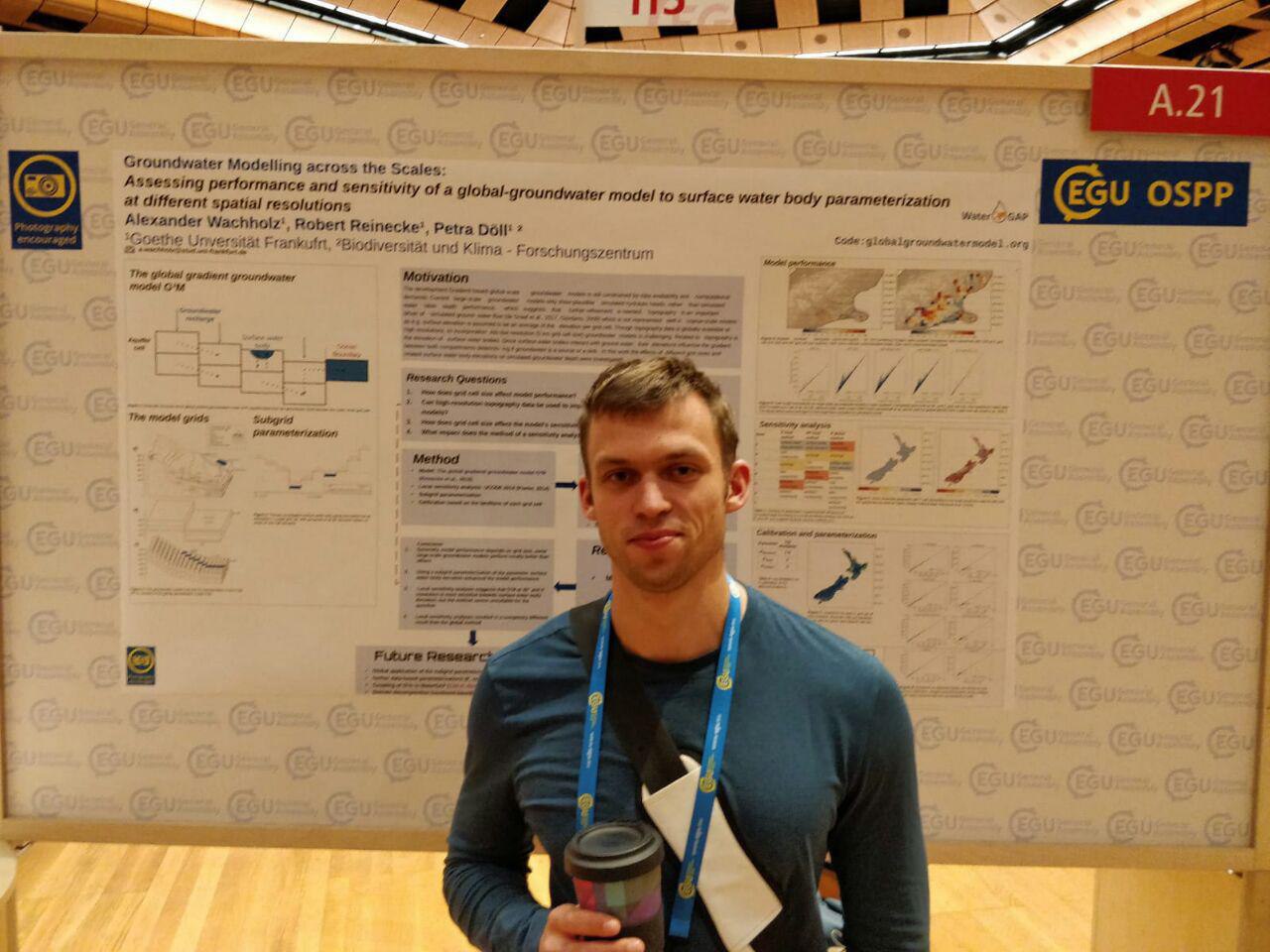
Alexander Wachholz
Excessive nutrient input is a threat to the quality of surface-, ground- and coastal waters on the global scale and is assumed to increase or at least stagnate until 2050. To reduce the threat of excessive nutrient input to our ecosystems, appropriate nutrient management measures are needed. However, the short-term success of management strategies can easily be occluded by time lags or long-term environmental changes, which are not captured by short-term measurement campaigns. To fully understand the response of a catchment to changes in land-use, climate or management, its long-term behaviour should be studied. However, those investigations require continuous multi-decadal measurements of climate, hydrology, water quality and nutrient inputs which are only available in a few regions, one of which is the Elbe catchment. Therefore the Elbe will be used as a starting point to develop a scalable framework for nutrient trajectory analysis. The goal of this framework is to provide a consistent approach to quantify the effects of climate, agricultural practices, waste-water treatment and natural attenuation on the long-term nutrient trajectories of large rivers. As a first step, the nitrogen trajectory of the Elbe will be investigated using a combination of statistical analyses and modelling. Of particular interest are the influences of possible nutrient legacies or climate change, which might conceal the results of recent management efforts.
Mentor TeamDr. Seifeddine JomaaProf. Dietrich Borchardt Dr. Soohyun Yang Dr. Olaf Büttner Prof. Ralf Merz Prof. James Jawitz |


|

Hsing-Jui Wang
My PhD project investigates signatures of time and space variability of sources on the probability distribution of particulate loads in river systems. We especially focus on suspended sediment and plastic debris, leveraging cutting-edge knowledge on sediment fluxes to address the emerging issue of plastic export from river basins.
Sediments occur naturally and are an integral component of aquatic systems. However, large suspended sediment loads which mobilized by anthropogenic activities and extreme hydro-meteorological events are especially detrimental to drinking water treatments and the capability to guarantee uninterrupted water supply. They also threaten key ecological processes (e.g., by damaging spawning habitats of fish) and engineering infrastructures (e.g., causing abrasion in hydropower plants).
Our goal is to synthetically analyze the role played by catchment geomorphology, climate and different space (e.g., upstream versus downstream, localized versus homogeneous source areas) and time variability of particulate inputs for the emergence of heavy tailed distributions of loads. We will tackle these research objectives relying on a description of river networks by means of width functions and a stochastic characterization of particulate inputs.
Mentor TeamDr. Stefano BassoProf. Ralf Merz Dr. Soohyun Yang |

|
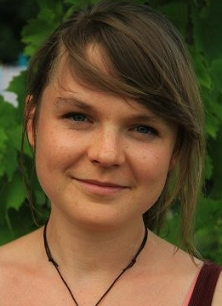
Carolin Winter
Human impacts on water quality span over various spatial and temporal scales. To better understand and attenuate these impacts, we need to identify the relevant driving forces on nutrient export and their relevant temporal and spatial scales. To this end, I am analyzing the dynamics of nutrient export from the sub-catchment scale to multi-catchment comparisons and from high-frequency event dynamics to low-frequency long-term trends.
I the first chapter of my PhD I disentangled the impact of catchment heterogeneity on nitrate export dynamics in a nested mesoscale catchment in Germany. Specifically, I analyzed sub-catchment-specific long-term trends and event dynamics. In the next chapter, I looked at nitrate export in the same catchment, but under an extreme hydro-meteorological event, namely the severe 2018 – 2019 drought. I could show that a severe drought can significantly alter catchment functioning, causing an increased inter-annual variability in nitrate export and a decrease in the nitrate retention capacity of a catchment. In the third chapter of my PhD, I focused on the impact of different hydro-meteorological event characteristics on nitrate export across six mesoscale catchments with different land use types. I calculated long-term trends in the hydro-meteorological event characteristic and analyzed the relationship between these characteristics and the characteristics of nitrate export during more recent years. In a final chapter, I aim for a more generalizable and mechanistic understanding of the inter-event variability in nitrate export patterns. To this end I conducted a data-driven analysis across a large number of mesoscale catchments in the U.S. and compared results from such analysis with results from an analytical and numerical modeling approach.
Mentor TeamDr. Stefanie LutzDr. Andreas MusolffProf. Jan Fleckenstein |

|
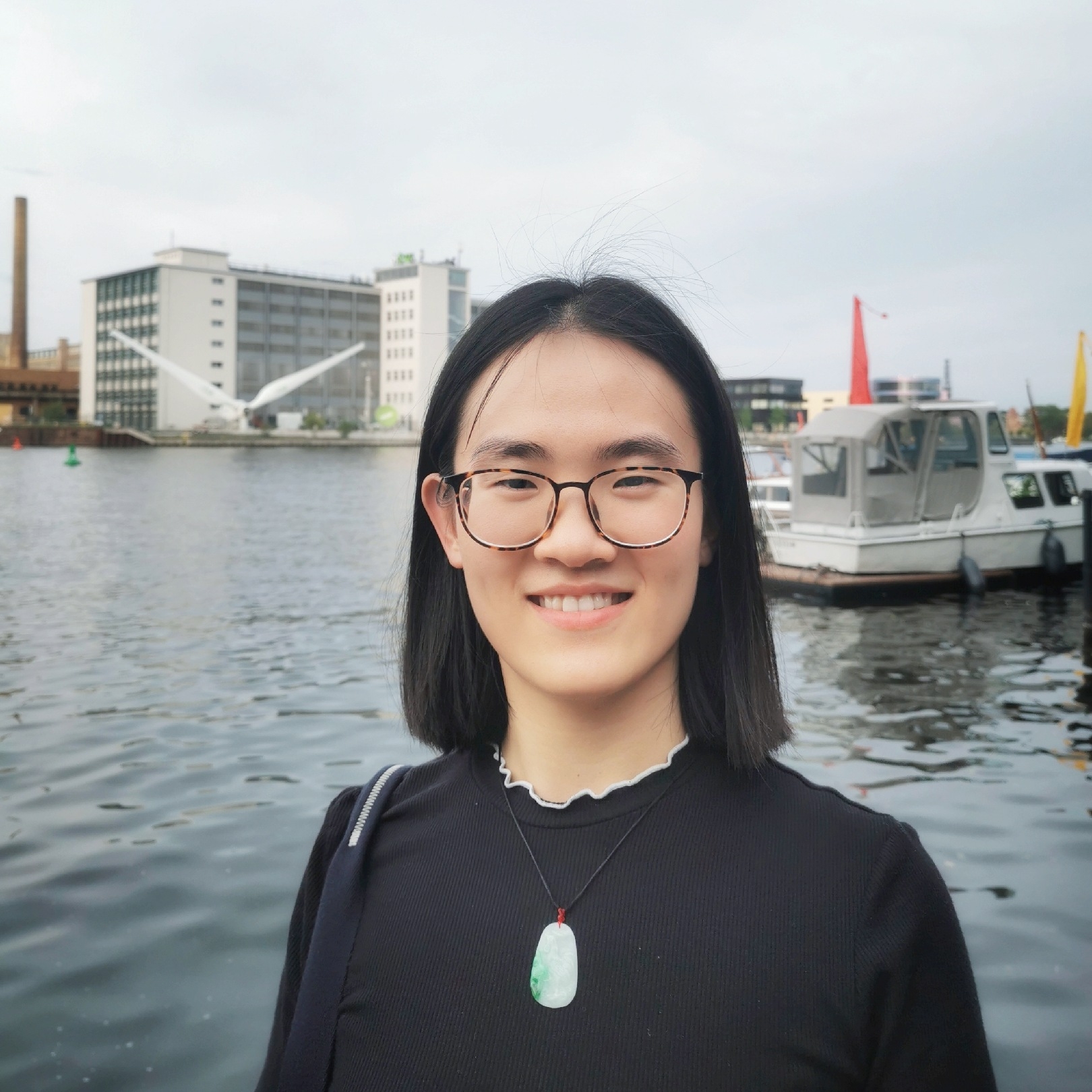
Xiaolin Zhangh
Nitrate uptake in streams is primarily related with assimilatory uptake by phototrophic organisms and dissimilatory uptake by heterotrophic bacteria. While the first process results in a temporary storage in biomass, removal of nitrate from the system by conversion to nitrogen gas is achieved by the latter process. Direct methods of quantifying in-stream nitrate removal processes have been limited to small reaches. For large streams, nitrate removal have largely been estimated using models which scale up observations from small reaches. Hence, the resulting high degree of uncertainties represents a substantial knowledge gap on real uptake quantities in higher order streams. Moreover, more streams have been changed by anthropogenic activities. River morphology has effects on stream hydraulic conditions (e.g., travel time and transient storage), which further have influence on stream ecosystem especially in hyporheic zone. It’s important to have an overview about how stream ecosystem acts to such anthropogenic activities regarding to nitrate removal. Considering all knowledge gaps, the main objective of my project is to use newly-developed water quality sensors to get new sights into biogeochemical process of large streams. These new technologies and data could provide comprehensive understand in analyzing event-scale, seasonal and long-term biogeochemical response of streams caused by natural and anthropogenic impacts.
Mentor TeamProf. Michael Rode Dr. Seifeddine Jomaa |

|
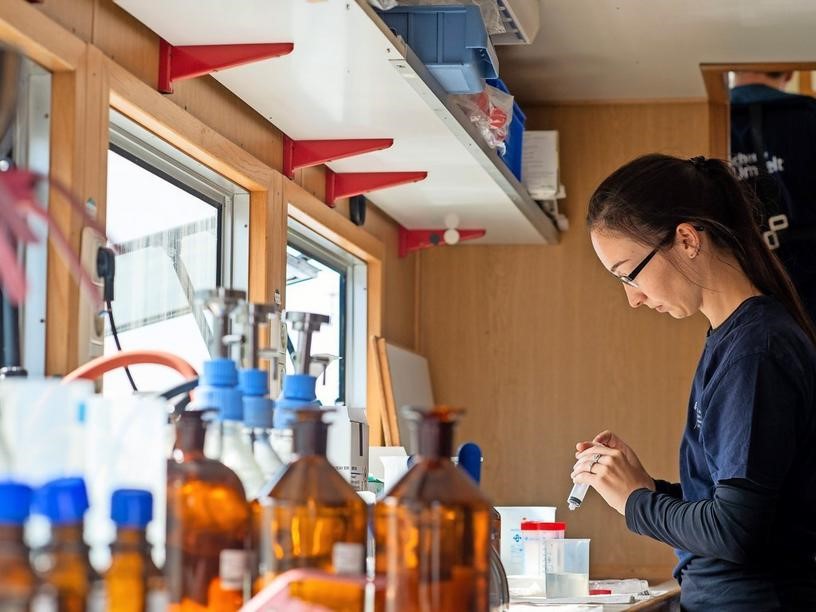
Julia Zill
Diffuse nutrient inputs and the associated eutrophication represent a serious water quality problem in surface water bodies that has hardly been solved to date. Since groundwater is the most important diffuse source, its contribution must be quantifiable and qualifiable over time. One of the most significant ecological effects of increased nutrient concentrations is eutrophication. The consequences are manifold and include unstable oxygen conditions in the water, an increased risk of toxic algae occurrence, and ultimately a decrease in biodiversity.
Along the German course of the Elbe, the groundwater-born nutrient input into the river will be spatially localised and evaluated on the basis of hydro-chemical and physico-chemical parameters. Furthermore, possible temporal and climate-driven fluctuations in the input quantities and paths will be determined. The ecological effects of groundwater-borne discharge on the eutrophication of the river Elbe are determined by using hydro-chemical (especially nutrients), local (biofilms) and regional (phytoplankton) ecological parameters, which are key factors in eutrophication. The biofilms will be recorded in the selected river segments along gradients of nutrient discharge through the groundwater. Effects of the input nutrients on the plankton will be estimated by a stoichiometric approach based on river conform data of algae and nutrients. The spatio-temporal changes in the water quality of the river Elbe and the associated fluctuations in nutrient concentrations will be analysed for the past and for future scenarios based on the determined groundwater residence time distribution and the effect of groundwater discharges on the local and regional algae density. An estimation of the consequences of eutrophication is thus made possible.
Mentor TeamDr. Christian SiebertProf. Markus WeitereDr. Ulf Mallast |

|
